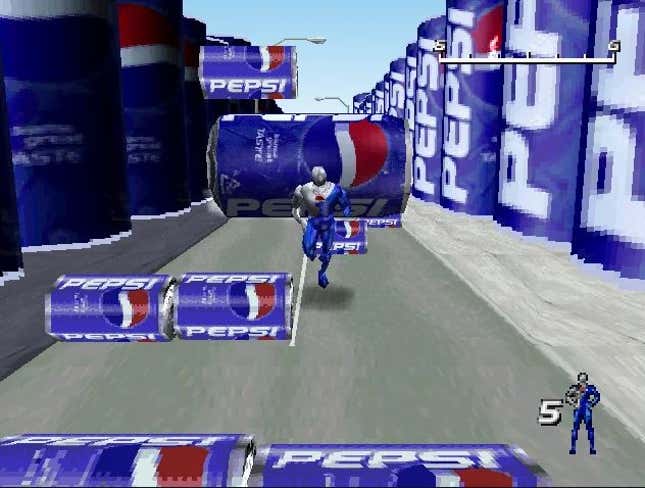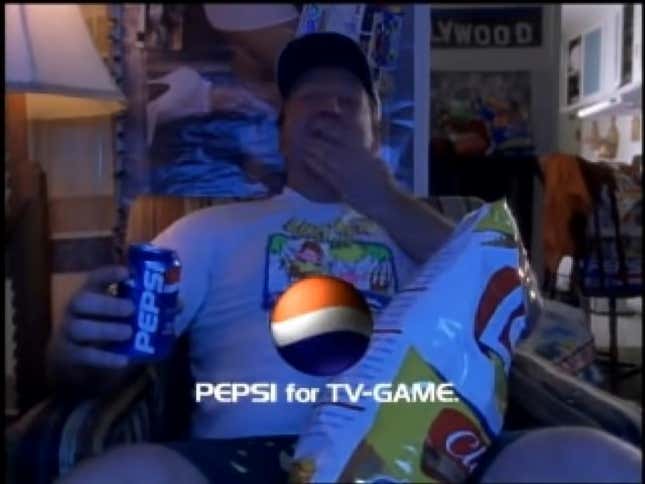America was in cultural decline in the 1990s. If that Cold War In the end, it took a large part of the nation’s identity with it. So it’s not shocking that the most materialistic society in history plunged headlong into brand wars after there was no real war for the first time in half a century. Pizza Wars. Civil wars. Console Wars. None of these were as well known as the Cola Wars between Coca-Cola and Pepsi. And like most American wars, it was exported elsewhere.
Japan is one of the largest beverage markets in the world. In 1996, Pepsi accounted for three percent of all soft drink sales in Japan. Coke? Thirty-one percent. Half of all vending machines contained Coca-Cola products. Pepsi was against it. It took a miracle. It needed a hero. It took Pepsiman.
The Origin of a Hero
Before there was Pepsiman, there was its creator, Takuya Onuki. As an advertising mastermind, Onuki has committed himself to a seemingly impossible task: selling Pepsi to the coke-guzzling Japanese. As told in the YouTube documentary The Secret History of PepsimanOnuki revealed in his book that the inspiration for Pepsiman came to him almost immediately. Shortly after receiving the assignment, he went to the local supermarket to experience Pepsi in real time. As he looked at the shelf, he thought about the parameters of the Pepsi brand campaign – young, challenging and American – in contrast to Coca-Cola’s traditional Japanese image. Coke was bigger than a brand in Japan; it was a whole color.
“The only cola is red Coca-Cola. Red Coca-Cola on bar signs. Red Coca-Cola in vending machines. Red Coca-Cola at McDonald’s. “Since childhood, Japanese people have been completely programmed to believe that Coke is just red Coca-Cola,” he wrote. “I had to make a commercial that worked [Pepsi] popular…the talent has to be the product itself.”
Pepsiman was born. Onuki knew it wasn’t smart, but it was effective. You immediately know what Pepsiman is about. He’s a cool, humanized can of Pepsi. (He’s wearing a necklace!) His only dialogue is “Schwaaa!” a Japanese onomatopoeia for the sound a soda can makes when you open it. People are always happy to see him because Onuki argued, “If Pepsiman is popular, the product will be popular.”
He was right.

The Rise of Pepsiman
Onuki’s vision for Pepsiman came to fruition, thanks in part to a partnership with legendary FX studio Industrial Light and Magic. Onuki and the Pepsi team launched an advertising campaign in which Pepsiman provided refreshments to thirsty, hip Americans. Pepsiman was also funny and self-deprecating, always suffering a slapstick injury after each delivery, symbolized by a crumpled can at the end of each ad. Now that Pepsi had a resilient, lovable mascot a killer theme song, sales skyrocketed. Soon Pepsiman grew beyond just television advertising. Licensing was underway.
Pepsiman merch is a thing. There are watches and piggy banks as well as bottle caps and backpacks to collect. But unlike most licensing agreements, which come with a simple manual of dos and don’ts from the parent company, all Pepsiman projects had to be approved by Onuki himself. He placed great emphasis on quality control and fine details. For example, he insisted that all Pepsiman commercials be filmed on location in the United States. It wasn’t cheap to set up production in New York, Los Angeles, Miami, etc., but Onuki didn’t compromise.

A Pepsiman video game may seem outrageous today when there are successful studios with great ideas still being gutted, but advergames were all the rage in the 1990s. To give you some perspective: 7-Up’s Cool place Mascot has not one, not two, but FOUR different games. Chester Cheetah, The Noid, Ronald McDonald and others also had their own games. Pepsiman went digital.
Pepsiman meets PlayStation
Pepsiman released for PlayStation in Japan on March 4, 1999. A runner game developed by KID in which the titular Pepsiman sprints across various themed obstacle courses and collects Pepsi cans. Come for the simple arcade action, but stay for the random humor. The entire package feels like an absurd adult swim club. The dialogue is in English with Japanese subtitles. The “story” of Pepsiman delivering Pepsi to people in need of Pepsi is accompanied by cutscenes in which a fourth-wall-breaking American, played by actor Mike Butters, watches the whole thing (while drinking copious amounts of Pepsi, of course).

It wasn’t a financial success. The reviews were mediocre. Some media outlets praised the game for overcoming an admittedly low bar, and others appreciated the strange but captivating energy Onuki had carefully designed everything related to Pepsiman. But the game never made it to the US and Pepsiman was canceled in 2003.
However, like all great heroes, Pepsiman is given a redemption arc. Onuki’s decision to include America in his advertising campaign proved to be a shield from the darkness. In 2016 Pepsiman has been added to the lineup for Summer Games Done Quick. The charity stream regularly attracts millions of viewers The Boyks’ 2016 run became so popular that GDQ brought it with them Pepsiman always back. People liked the epileptic amount of advertising (most logos per second, loud Complex) and Butters’ non-continuing cutscenes.
Pepsiman may have lost the Cola War, but it won our hearts forever.



